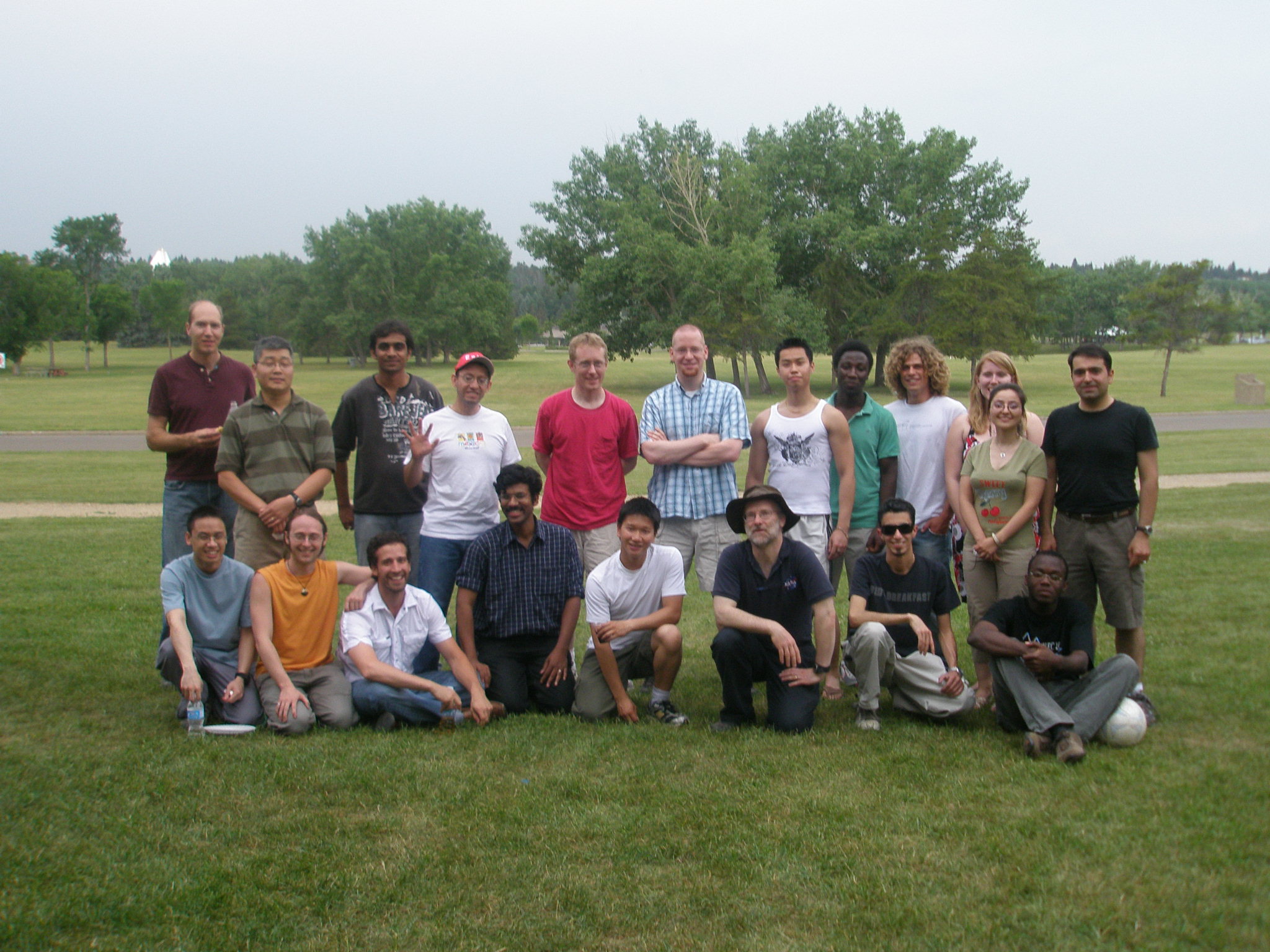 The Applied Miniaturisation Lab's Gallery
The Applied Miniaturisation Lab's Gallery
Dr. Christopher James Backhouse
Abstract
 The primary focus of the research in my lab, the Applied Miniaturisation Laboratory (AML),
is upon making important technologies more accessible through miniaturisation and integration.
Nowhere is this more important than in applying nanobiotechnologies in Lab on Chip (LOC) systems.
In particular, we work closely with academic and industrial collaborators in developing medical
diagnostic devices that have the potential to dramatically affect how we deliver healthcare.
The primary focus of the research in my lab, the Applied Miniaturisation Laboratory (AML),
is upon making important technologies more accessible through miniaturisation and integration.
Nowhere is this more important than in applying nanobiotechnologies in Lab on Chip (LOC) systems.
In particular, we work closely with academic and industrial collaborators in developing medical
diagnostic devices that have the potential to dramatically affect how we deliver healthcare.
(This page is under construction - and always will be)
( To go to the AML home page click
(here))
As the AML in Ontario

This is us on the rooftop patio of the QNC in the summer of 2013.
From left to right for the 5 at the back we have: Tianchi Ma, Victor Shadbolt, Jonathan Sutley, Moira Glerum.
From left to right for the 4 at the front we have: Hirad Raisi, Raffaele Camasta, Madeline Couse, Chris Backhouse.
As the AML in Alberta

This is all of us, along with a few colleagues and visitors, amidst an Edmonton barbeque in July 2008.
From left to right at the back we have: Alex Stickel (iLOC & AML veteran), Abraham Jang, Ravi (ACDC), Jose Martinez, John Crabtree (ACDC), Rob Johnstone, Sonny Ho, Yaw Amoako-Tuffour,
Chris Bargen, Allison (Ace) Bidulock, Sommayeh (Nilufar) Poshtiban, Reza (Marquez group)
From left to right at the front we have: Viet Hoang (iLOC & AML veteran), Patrick Pilarski, Vincent Sieben, Govind Kaigala, Sheng Choi, Chris Backhouse, Moh Behnam, Ayo Olanrewaju
Inexpensive Systems and Instruments
Much of our development is of the systems to operate the "lab on chip" (LOC) devices. We have established a skill set in building extremely inexpensive systems (less than a thousand dollars).
These systems are made in-house from electronics, optics and machined components and are several orders of magnitude less expensive than conventional systems.
We hope that these may one day serve as prototypes of new medical diagnostics. (Where marked, please click to go to relevant publications)
Microelectronic and Microfluidic Devices
Of course, a LOC instrument is of little use without the microchips themselves.
Here we present a brief overview of some of the chips we have developed, largely based on integrations
of genetic amplification (PCR) and analysis (electrophoresis).
Together with the above systems, these chips enable the implementation of a wide range of nanobiotechnologies
- in particular, medical diagnostic applications.
The research activities of the AML are directed towards the use and development of microsystems and the nanotechnologies implemented upon them.
This field (LOC) is a highly dynamic one with exciting work being performed around the world, much of it with the goal of revolutionizing healthcare.
These images may have helped describe what we do... but please read our publications and research sections to get the full flavour.
This approach takes teamwork with the development of common infrastructure used by all.
Although we have a very interdisciplinary environment, most of the people in the AML develop an area of particular emphasis and interest
- e.g. electronics & optics, molecular biology, microfabrication, simulation or fundamental theory.
We have a full set of facilities from design and manufacture in our own labs, to joint development of applications with healthcare partners.
There is much to do, and a great need for it to be done.
 The primary focus of the research in my lab, the Applied Miniaturisation Laboratory (AML),
is upon making important technologies more accessible through miniaturisation and integration.
Nowhere is this more important than in applying nanobiotechnologies in Lab on Chip (LOC) systems.
In particular, we work closely with academic and industrial collaborators in developing medical
diagnostic devices that have the potential to dramatically affect how we deliver healthcare.
The primary focus of the research in my lab, the Applied Miniaturisation Laboratory (AML),
is upon making important technologies more accessible through miniaturisation and integration.
Nowhere is this more important than in applying nanobiotechnologies in Lab on Chip (LOC) systems.
In particular, we work closely with academic and industrial collaborators in developing medical
diagnostic devices that have the potential to dramatically affect how we deliver healthcare. 
 The Applied Miniaturisation Lab's Gallery
The Applied Miniaturisation Lab's Gallery 
















